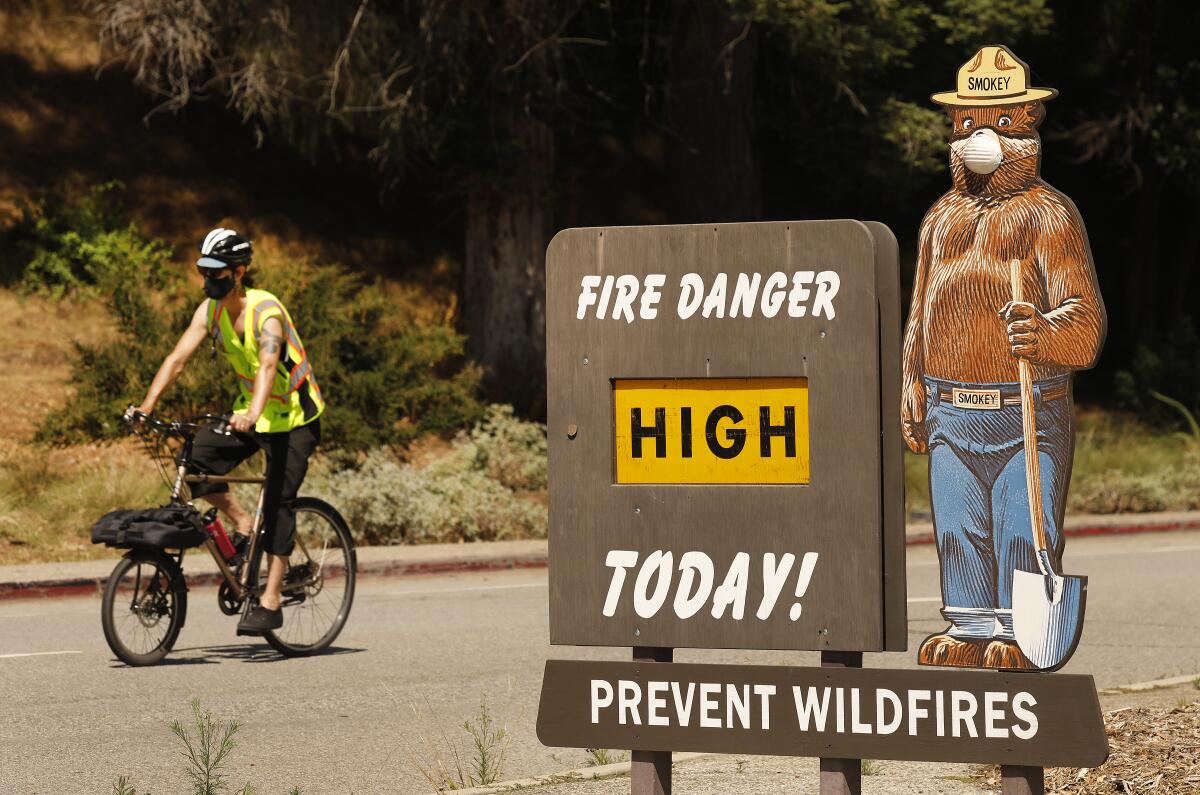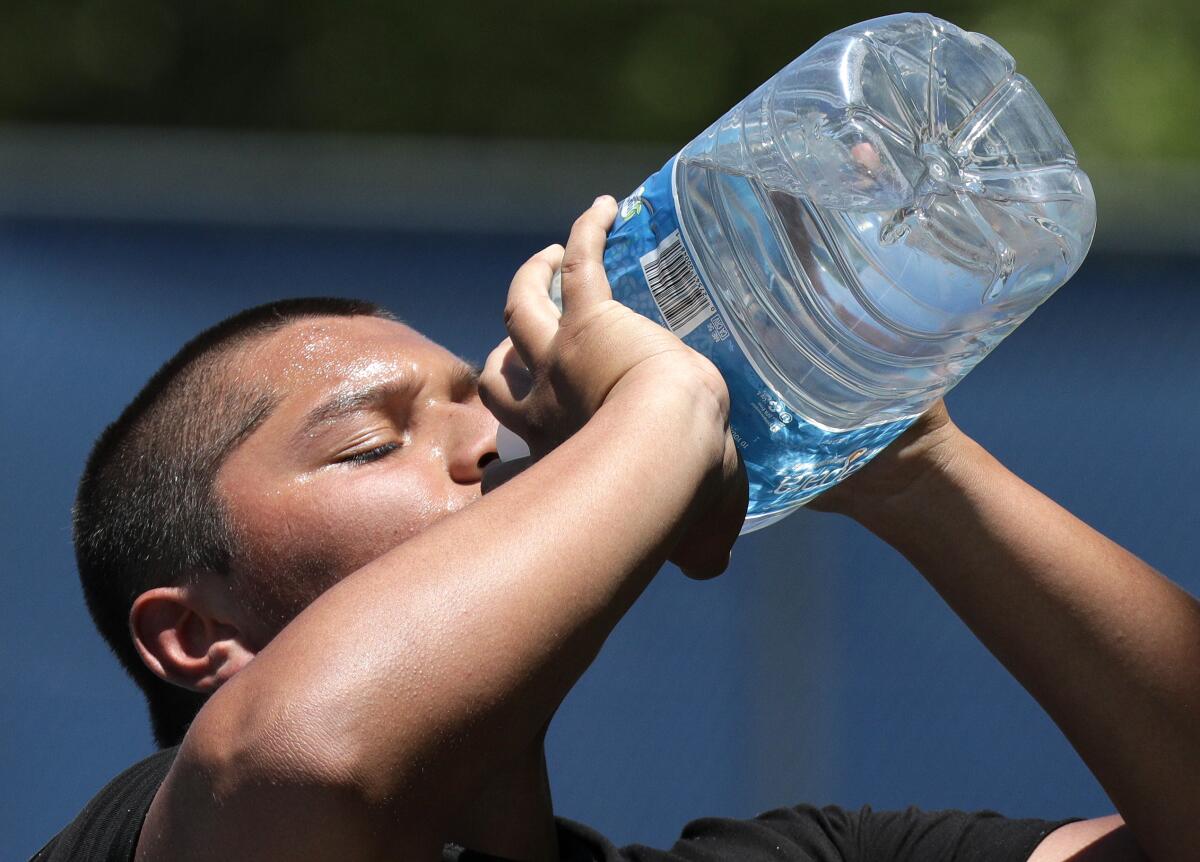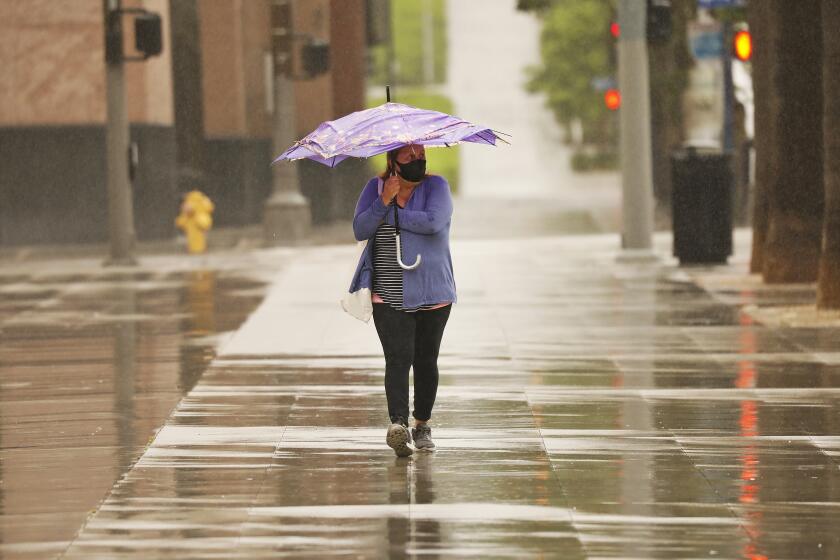Heat wave to bake parts of Southern California, dry out vegetation that can fuel fires

- Share via
A heat wave will bake Southern California through Thursday, boosting the mercury to dangerously high levels in some inland areas and parching vegetation that could serve as fuel for brush fires, forecasters say.
Inland areas will see maximum temperatures 10 to 18 degrees above normal, with many valleys hitting the 90s and some cracking triple digits, according to the National Weather Service.
The coast will have a more subtle uptick, with temperatures 4 to 6 degrees warmer than usual for this time of year.

Hardest hit locally will be the Antelope Valley, where the mercury could top out in the mid-100s.
The National Weather Service has issued an excessive heat warning for the region, indicating that conditions will significantly increase the potential for heat-related illnesses — particularly among vulnerable populations such as children and seniors, according to Kristen Stewart, a meteorologist at the agency’s Oxnard office.
“That’s kind of our hot spot,” she said of the Antelope Valley.
The heat wave is expected to be more uncomfortable than unprecedented in Los Angeles County, Stewart said, with temperatures that are “unseasonably warm” but not record-breaking.

Other areas of the state have already had to rewrite their record books, though. Downtown Sacramento hit 100 degrees Monday, tying a daily record set in 1951.
Records for the day were set in downtown Oakland, at 91 degrees; Kentfield, 95; and San Francisco International Airport, 90.
San Jose and Gilroy also tied historical records, hitting 95 and 98 degrees, respectively, according to the weather service.
Fresno and Bakersfield also could topple temperature records, forecasters say. An excessive heat warning is in effect through Thursday evening for the San Joaquin Valley and Sierra Nevada foothills.
Although forecasters don’t believe this week’s heat wave will result in immediate fire danger, “the extended hot and dry conditions will continue to dry out the fine fuels, increasing the threat of grass fires, especially across interior areas,” according to an agency forecast.
The Los Angeles County Fire Department already made quick work of one such blaze, which blackened 10 acres in Pomona on Monday.
“There’s always the potential for that when you have hot temperatures and kind of dry air and all that,” Stewart said. “We still are not expecting critical danger, due to the fact that we have more moist fuels from all the recent rains the past couple months.”
Most areas of Los Angeles County will see a quarter-inch or less of rain, which rarely falls at all this time of year, according to the National Weather Service.
But vegetation drying out now “will be a concern later on,” she added.
The heat wave also will take its toll on air quality. Given the expected high temperatures, the South Coast Air Quality Management District has issued a wide ozone advisory through Friday afternoon.
The amount of smog will likely reach unhealthful levels in the Santa Clarita, San Fernando, San Gabriel and Coachella valleys, as well as the Inland Empire and San Gabriel and San Bernardino mountains, according to the district.
When that occurs, “people with heart or lung disease, older adults and children should avoid prolonged or heavy exertion,” district officials said in a statement. “Everyone else should reduce prolonged or heavy exertion.”
More to Read
Sign up for Essential California
The most important California stories and recommendations in your inbox every morning.
You may occasionally receive promotional content from the Los Angeles Times.












